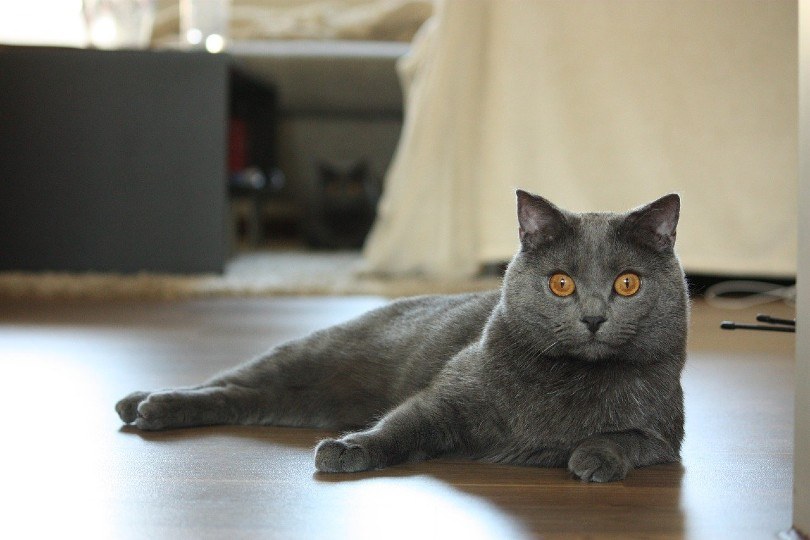

While cats are stereotypically aloof and independent, there are quite a few cats that act like dogs. These cats may follow you around the house and readily learn tricks like dogs. Many even enjoy walking on a leash and performing similar tricks as canines. They may also do things like follow their people around and meow for attention.
Different cat breeds are more prone to these behaviors than others. Much of behavior is genetic, though socialization and personalities can make a difference. Each cat is different, with some showing more dog-like behaviors than others.
Surprisingly, there are actually many breeds of cat that act more like dogs than the stereotypical cat. We’ll look at some of the most common breeds that act like cats.
Top 11 Cat Breeds That Act Like Dogs:
1. Abyssinian
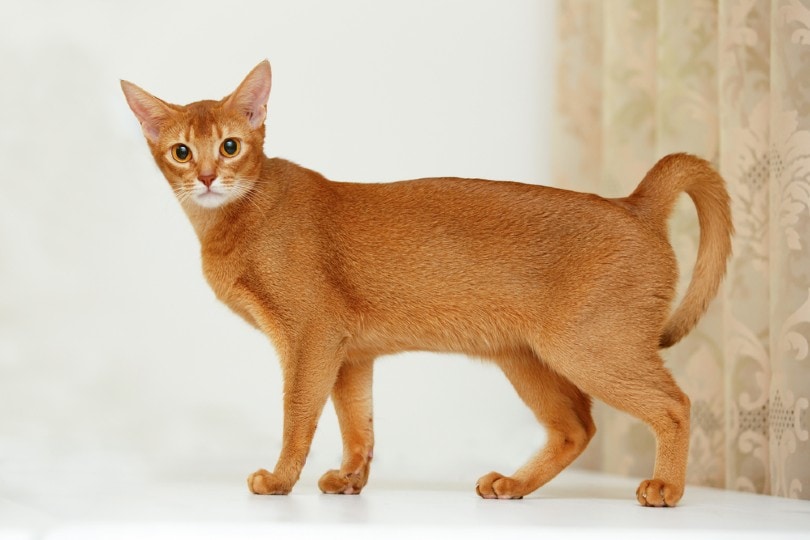
| Size: | 8-12 pounds |
| Lifespan: | 12-15 years |
| Temperament: | Active and curious |
The Abyssinian is a unique breed of cat with a distinctive spotted tabby coat. This breed is from Abyssinia, which is now known as Ethiopia, hence the cat’s name. This is likely an ancient breed, as scientists have found mummified Abyssinian cats in Ancient Egyptian tombs. They are one of the most popular breeds worldwide, likely due to their ancient age. They’ve had a lot of time to raise their population!
They are relatively long and lean, though not necessarily as lean as a Siamese. Usually, they are described as active and curious, which also means that they tend to get into things. They like to play and run around, which is one reason that they are often considered “dog-like.” They will even play fetch and learn tricks. They love their people and crave interaction and affection – and they aren’t shy about it.
These felines become very attached to their people and will follow them around the house. They love human contact and get along with pretty much everyone, including children.
They are prone to a few health conditions, including gingivitis. They are also prone to a genetic mutation that affects the kidneys. They may have problems with retinal degeneration, which is also genetically linked. However, breeders have worked hard to reduce the prevalence of these genetic problems.
2. Ragdoll
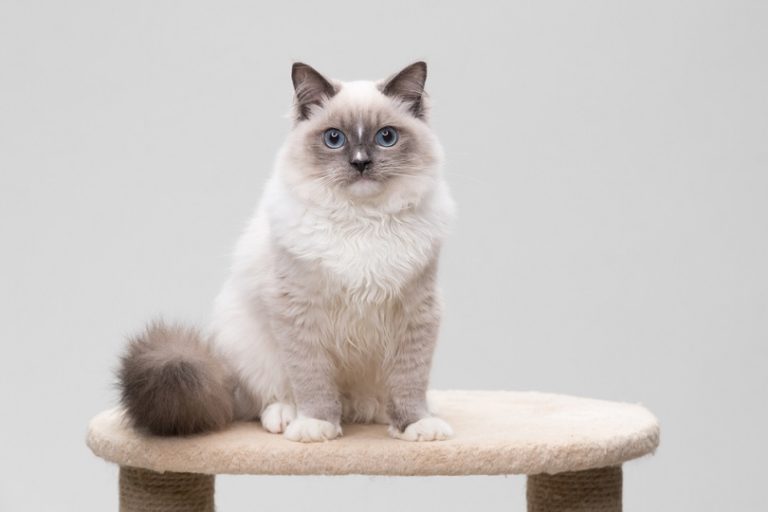
| Size: | 8-20 pounds |
| Lifespan: | 12-15 years |
| Temperament: | Docile and affectionate |
The Ragdoll is a beautiful breed with a pointed coat and blue eyes. While their coats do come in many different colors, they are always pointed – which means their extremities, ears, and face are darker than the other areas of their body. They are larger when compared to most breeds and have a longer coat, which makes them appear even bigger. They are pretty fluffy.
These cats get their name from their strange tendency to “flop” when they are held. Through selective breeding, these cats have developed this behavior even further. Some breeders are looking to reverse this trend, though, as they are afraid the cats may be a little too docile when held.
They are known for their calm and floppy nature. They are very laidback and extremely docile. Unlike some rumors, they are not resistant to pain; they are just too docile to react to it sometimes. These cats are usually very affectionate, but they aren’t people-dependent. They don’t mind being left alone for a while, but they will bother you for attention when you get home.
3. Manx
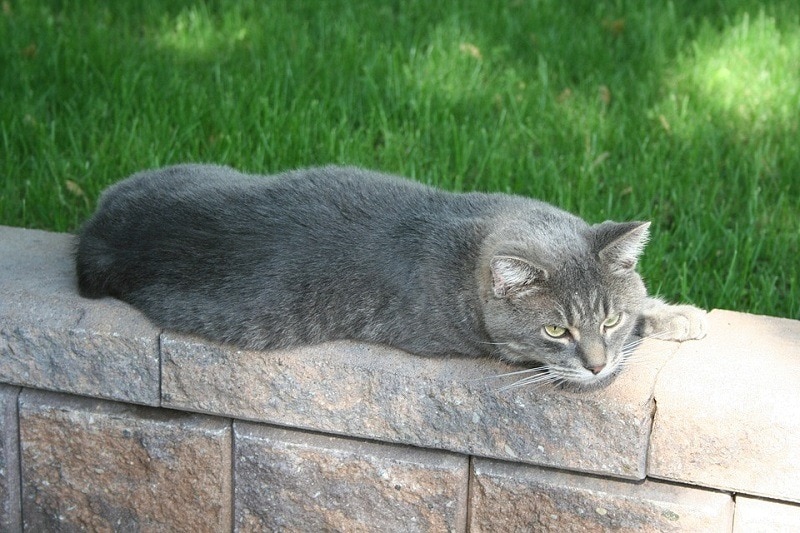
| Size: | 8-12 pounds |
| Lifespan: | 14-16 years |
| Temperament: | Active and friendly |
The Manx is a unique breed of cat that developed naturally on the Isle of Man. Sometime in the past, a rare gene that resulted in a stubby tail showed up in one of the cats on the island. Because of their geographic isolation, this trait eventually spread to most cats, leading to the Manx breed we know today.
These cats come in many different colors and patterns. However, all-white Manx are uncommon, though not entirely impossible. They are shorthaired, as their longhaired counterpart is grouped into a different breed altogether.
These cats are known for being great hunters and were used for centuries to keep mice out of grain stores and boats. They were well-known as a ship cat. They are also quite active and social. They enjoy their people and playtime. They are said to be quite tame despite their wild appearance and hunting abilities. This cat can be shy with strangers, though they are very affectionate with their family members.
4. Turkish Angora
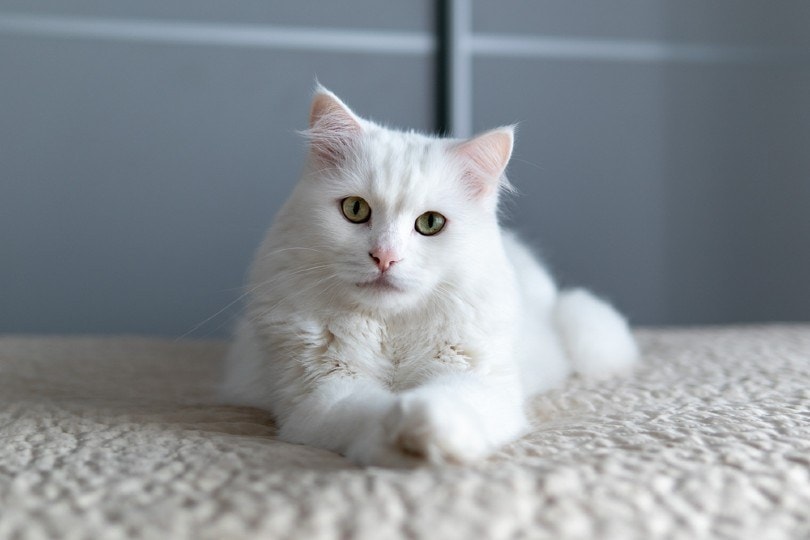
| Size: | 5-9 pounds |
| Lifespan: | 12-18 years |
| Temperament: | Intelligent and active |
This cat breed is a natural breed, which means it developed naturally without selective breeding. It originated in central Turkey in the Ankara region, which explains its name. An old breed, they were first documented in the 17th century but may be much older than that. They are often white and longhaired. They may be the breed that initially created the mutation for solid white and long hair.
Their long, silky coats cover their balanced body. They are neither muscular or lean but somewhere in the middle. Though they are most famous for their white coloration, they can come in many different colors, including solid black, chocolate brown, and tabby patterns. Their eyes come in many different colors as well, including green, blue, and amber.
These felines are playful and intelligent. They are pretty athletic and need a bit of room to run off their energy. They need quite a bit of exercise, so plan to invest in climbing structures and toys. These felines are pretty intelligent and have basic problem-solving skills. They can be taught tricks with some ease and adapt to deafness very quickly.
They love to climb and have even been known to ride on their people’s shoulders. They prefer to be above the action.
The white gene that also leads to their blue eye color is linked with deafness. If a cat has a blue eye, they may be deaf on the side of their blue eye. Cats with two blue eyes may be completely deaf.
5. Maine Coon
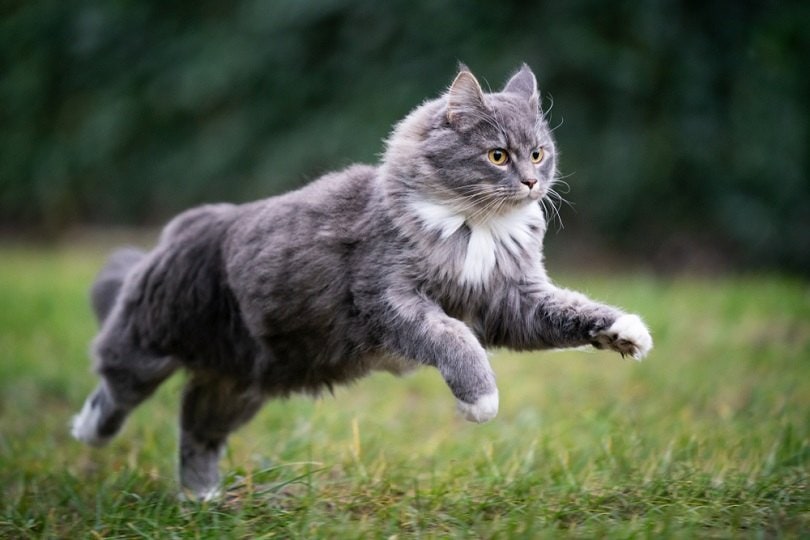
| Size: | 8-18 pounds |
| Lifespan: | 13-14 years |
| Temperament: | Independent and gentle |
The Maine Coon is one of the largest breeds of domestic cats in the world. As their name suggests, they likely descended from Maine. The exact breeds they descended from are unknown. However, they likely developed naturally out of the cats that settlers brought over with them, including the Norwegian Forest cat and Siberian.
These felines are known as a “gentle giant.” Despite their large size, they are very socialable and get along with just about anyone. They have a robust bone structure that contributes significantly to their larger size. They are also quite fluffy, which makes them look even bigger than they already are.
They have above-average intelligence and are easy to train. They are attached to their family and may follow them around the house. However, they are also quite independent and don’t mind doing their own thing when you aren’t available. Many will take care of themselves until your lap is available. Then, they will slip in for some cuddles.
They are also quite gentle, which makes them suitable cats for children. They are quite playful and active, so plan on investing in toys and climbing equipment.
6. Bombay
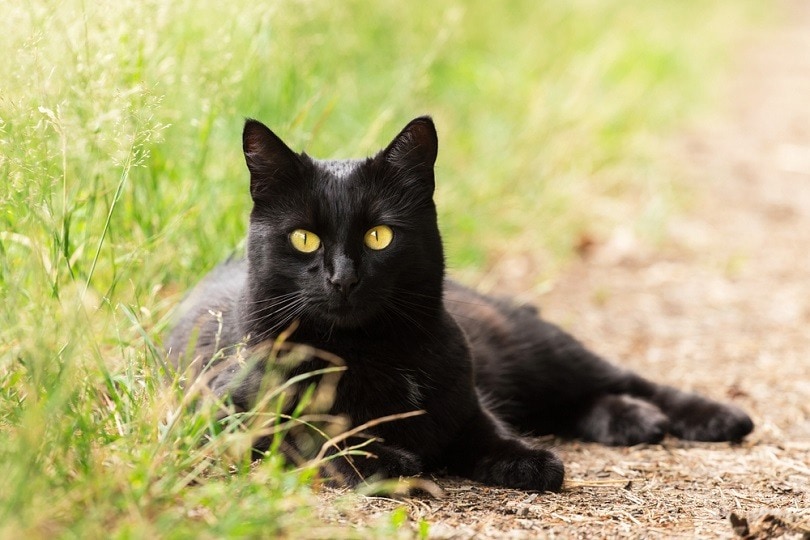
| Size: | 8-15 pounds |
| Lifespan: | 15-20 years |
| Temperament: | Social and outgoing |
This shorthaired cat is the result of crossbreeding Burmese and American Shorthair cats. They are relatively new as far as breeds go. They were selectively bred in 1965 and designed to look like miniature black panthers.
They are closely related to the Burmese cat and act much like them. They have all-black coats, black soles, and a black face. In other words, they are entirely black. Their eyes are copper or green. Their fur is short and very sleek. It lies close to their body and doesn’t require much care. They have a medium build with a bit of muscle.
These cats are incredibly healthy. They live longer than most felines, though their food intake needs to be controlled to avoid obesity.
They are outgoing and brave. Not much scares them, including larger dogs and strangers. They are incredibly social and will attempt to get attention from just about anyone. They are great for families with children for this reason. They love attention and don’t mind the loudness that children often bring with them.
They are not very independent and prefer to have someone nearby at all times. Older cats may be a bit more independent than their younger counterparts. This isn’t a breed to leave alone for an extended period.
7. Sphynx
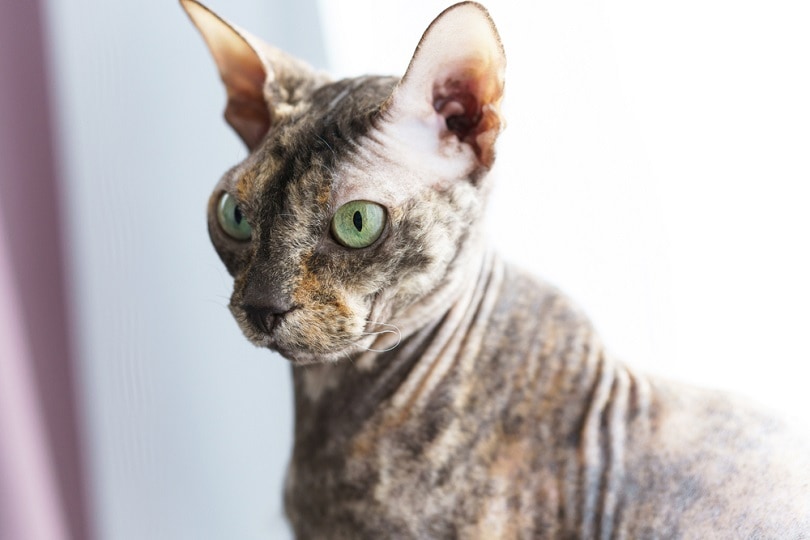
| Size: | 6-12 pounds |
| Lifespan: | 8-14 years |
| Temperament: | Outgoing and active |
Out of all the affectionate cats out there, the Sphynx probably takes the prize as being the most people-oriented. They are known for following their people around the house and “talking” to them. They are also known for their (almost) complete lack of fur. This is the result of a genetic mutation that was chosen through selective breeding, which occurred in the 1960s. Their skin is similar to leather. They may be completely hairless or have a small amount of hair, depending on their exact genetics.
Whiskers can be present, smaller than usual, or completely absent. Their skin has the markings that their fur would usually have. Because they have no hair, they release more body heat. This makes them warmer to the touch, though they may not do good in colder climates without some help.
These felines are incredibly extroverted. They love people and attention. They will seek out attention from just about everyone, which usually involves them being very vocal. They are a high-energy breed, so they need a lot of room to run around and plenty of playtime. They are brilliant and can easily be trained, similarly to a dog.
8. Burmese
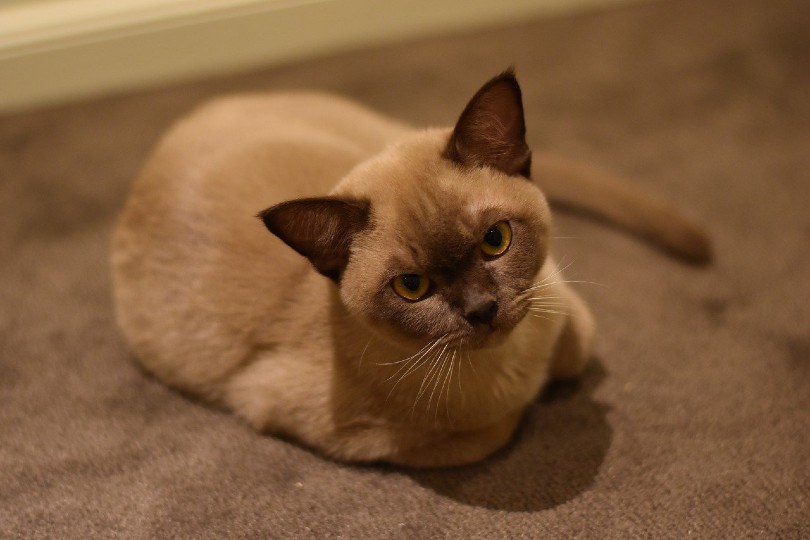
| Size: | 6-14 pounds |
| Lifespan: | 16-18 years |
| Temperament: | People-oriented and playful |
The Burmese originated in Burma, specifically around the Thai-Burma border. They were the result of selective breeding, which occurred in 1930. All of the cats are descended from one feline called Wong Mau, which was imported into America and crossbred with a Siamese. The British and American Burmese cats are somewhat different, as they developed separately for the most part.
Initially, these cats were only dark brown. However, they have been developed to include different colors today. The formal recognition of these other colors varies significantly, though.
These felines are very people-oriented. They keep their kitten-like behaviors far into adulthood and are quite playful. They form strong bons with their owners and want to be in the center of household activity. They are highly social for a cat. They enjoy games like fetch and can learn tricks with some ease. They are often described as “dog-like” due to these behaviors.
They are highly vocal, so be prepared for some noise if you adopt this breed. They are also not suitable for being left alone for an extended period of time.
9. American Curl
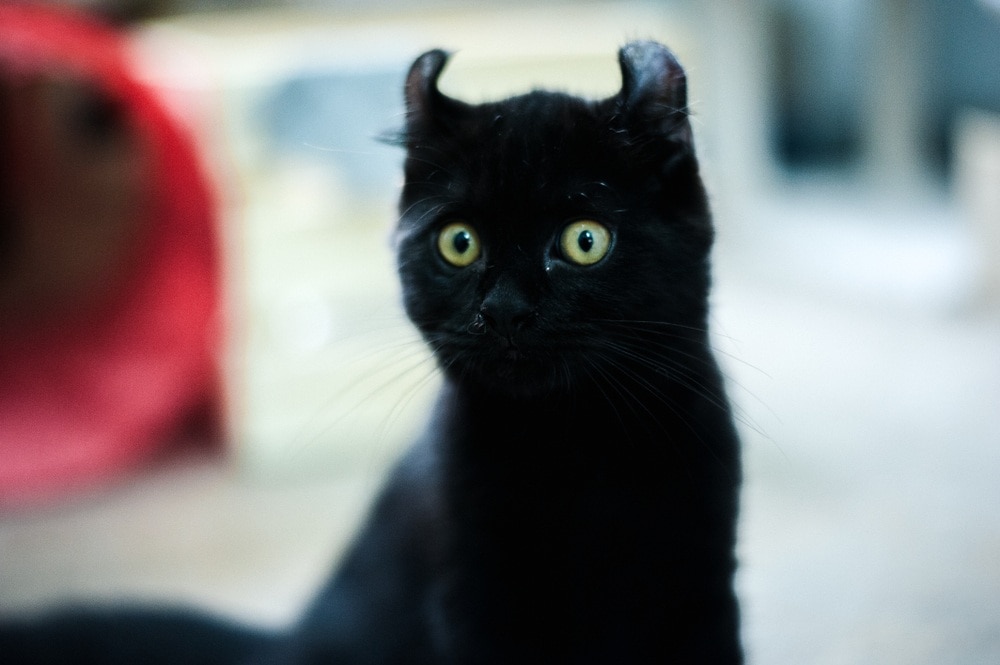
| Size: | 5-10 pounds |
| Lifespan: | 9-13 years |
| Temperament: | Adaptable and affectionate |
The American Curl is an unusual feline. They have curled ears due to a genetic condition that affects their cartilage. The first cats of this breed were discovered in 1981 as strays. These cats then had kittens with the same curled ear characteristics. These strays were the original parents of the breed.
The kittens of the American Curl are born with normal ears. They start to curl in just a few days, though. Some American Curls don’t have curled ears, but this is a bit rare. The curled ear trait is dominant, so only one parent needs the gene for it to pass down to most of the kittens.
These cats are generally somewhat healthy, more significant due to their large gene pool. However, their ears require gentle handling as they are prone to handling. They may also be more prone to ear infections.
These cats are affectionate and love their people. They form strong attachments to their owners, similarly to a dog. They have a moderate activity level. They will need some playtime but are also fine to lounge around for much of the day. These cats adapt quickly to different circumstances and are not easily stressed.
10. Birman

| Size: | 10-12 pounds |
| Lifespan: | 13-15 years |
| Temperament: | Docile and quiet |
The Birman is from Burma, hence their name. They are longhaired and have color-pointed coats. Their eyes are typically a deep blue, and their fur is very silky. Gloves on their paws are common and distinguish them from other point breeds. How this breed originated is unknown. However, they did originate in Burma.
The Birman is known as a loving breed. They make good companion cats. They aren’t especially active. They tend to lay around for much of the day and are pretty docile. They are somewhat vocal, but their meows are quiet and unintrusive. They don’t always do good with children, as they prefer a quiet and calm environment. However, they can do well with older children.
These cats are people-oriented, but they aren’t entirely as dependent as other felines. They are usually fine being left alone during the day, though they will demand attention when you get home.
11. Chartreux
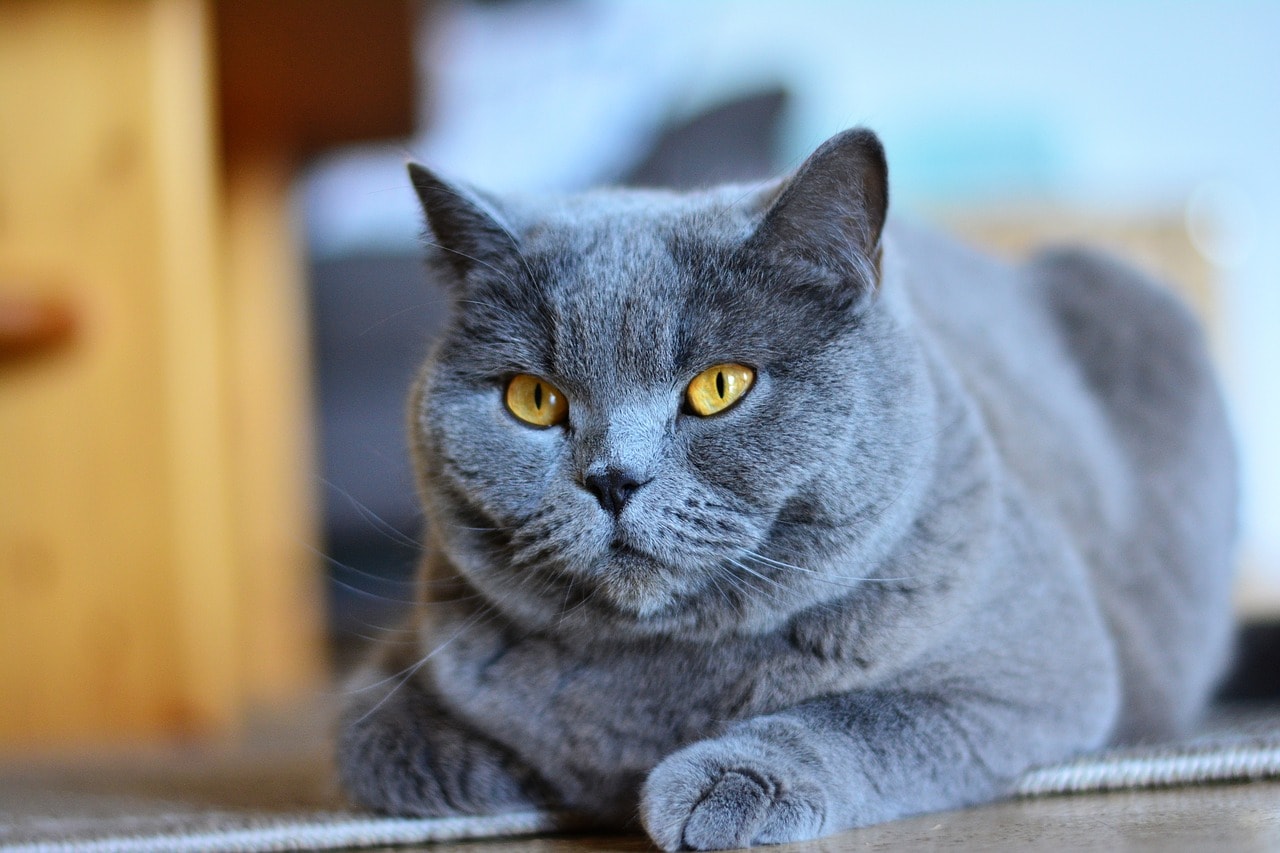
| Size: | 7-12 pounds |
| Lifespan: | 13-15 years |
| Temperament: | Quiet, loyal, and intelligent |
This rare breed is from France, though registries around the world recognize it. They are short cats with thinner bones. They’re known for their fast reflexes and their squat body type. These cats only come in “blue” color. Their double-coat is weatherproof and quite thick, which makes them a bit fluffy despite their shorter fur.
These felines are prized by farmers due to their hunting abilities. They are very quiet cats and hardly make a peep most of the time. They are brilliant and can teach themselves how to do many things. These cats are known for using doorknobs, opening window latches, and turning electronics off and on.
They remain playful well into their adult years, retaining many of their kitten characteristics. They are non-aggressive and get along with pretty much everyone. They tend to be a one-person cat, bonding closely to a single owner and ignoring everyone else. They may not be suitable for families for this reason.
Featured image credit: LucasBouillon, Pixabay
Kristin is passionate about helping pet parents create a fulfilling life with their pets by informing them on the latest scientific research and helping them choose the best products for their pets. She currently resides in Tennessee with four dogs, three cats, two fish, and a lizard, though she has dreams of owning chickens one-day!







